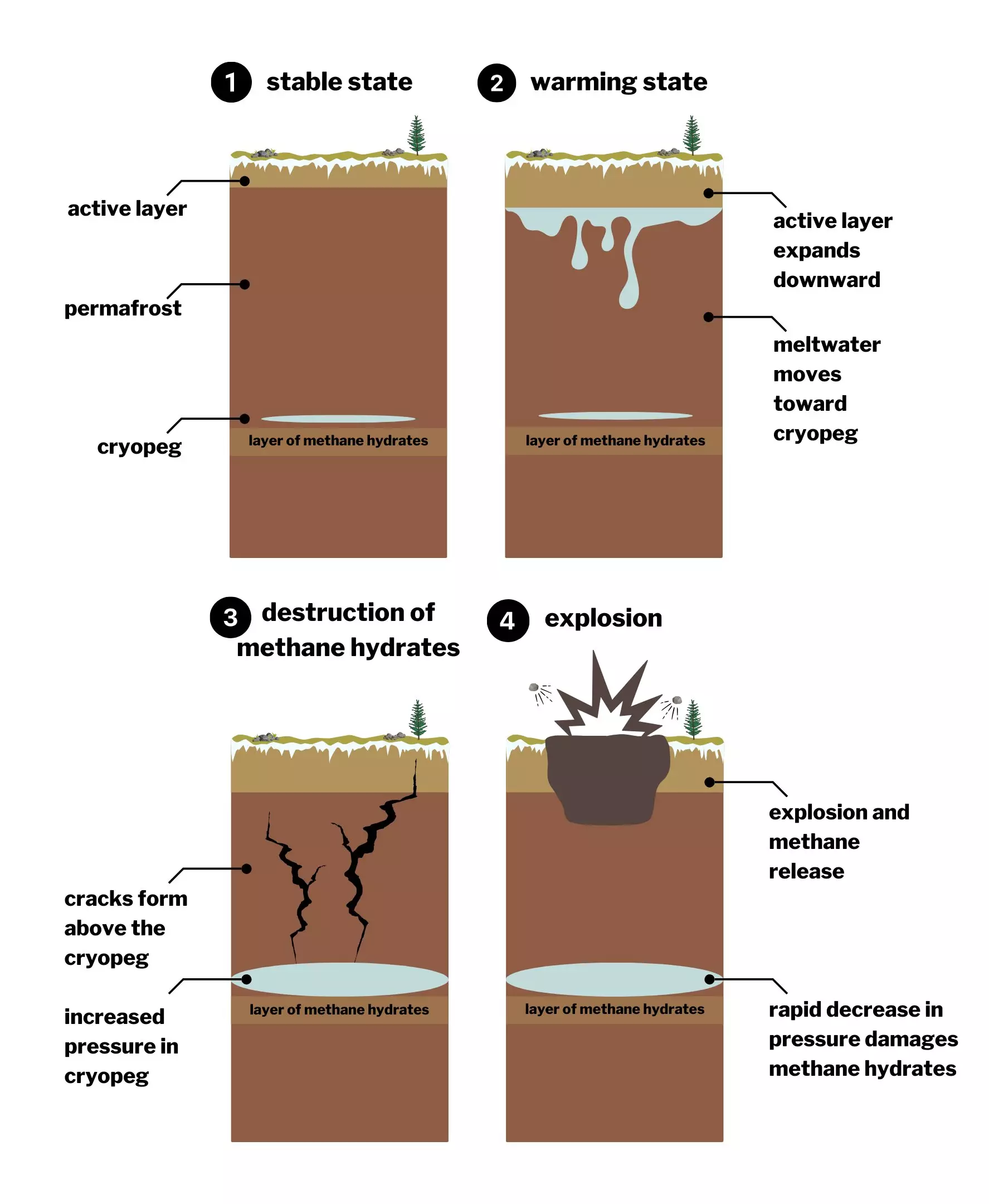In the frigid region of Siberia, a series of perplexing craters emerged within the permafrost nearly a decade ago, inciting both awe and concern among scientists and environmentalists alike. Discovered on the Yamal Peninsula in 2014, these craters, some expanding up to 70 meters (230 feet) in diameter, indicated a potentially alarming phenomenon linked with climate change. Recent investigations reveal that fluctuating temperatures in conjunction with the area’s unique geological features have crafted conditions ripe for explosive releases of methane, a potent greenhouse gas found trapped in permafrost layers. This article delves into the intricacies of the new findings and the climate-induced mechanisms believed to drive this unusual geological activity.
The Yamal Peninsula itself is characterized by its low-lying expanse jutting into the Kara Sea in north-central Russia, presenting a seemingly unobtrusive landscape that belies the complex interactions at play below the surface. The study conducted by a team of researchers shed light on the geological layers that create a delicate balance between stability and volatility. Underneath the remarkable permafrost, various salinity layers and cryopeg – a unique state of water that remains unfrozen despite low temperatures – interact with methane hydrates. These hydrates form stable deposits under stringent conditions of pressure and low temperature, but climate warming initiates a response that can lead to destabilization and explosive releases.
The intriguing aspect of this phenomenon lies in the need to first understand its emergence – was it a physical or chemical reaction that caused these craters? Researchers, including chemical engineer Ana Morgado and geophysicist Julyan Cartwright, approached the dilemma with a methodical investigation, likening their efforts to detective work. Through this scientific inquiry, they determined that the explosions were not the result of conventional chemical reactions, akin to a dynamite blast. Instead, the evidence points to a physical process underpinning the reactions occurring within the geological framework of the Yamal Peninsula.
So how does this physical process transpire? The researchers propose that osmosis – the natural movement of fluids in response to concentration gradients – serves as the “pump” responsible for these explosive events. The thawing of the permafrost due to rising temperatures causes water from the upper active layer to seep deeper into the cryopeg, driving pressure levels to climb. Without sufficient space to accommodate this extra meltwater, the accumulating pressure eventually leads to cracks forming within the soil, channeling upwards and resulting in a sudden reversal of pressure.
Amid these revelations lies the indisputable influence of climate change. The timeframe of the study aligns with a marked increase in global temperatures that began significantly in the late 20th century. According to the research, the prolonged warms spells have enabled a gradual melting of the permafrost, facilitating this intricate series of geological events. Furthermore, the research team highlights the anthropogenic factors contributing to this crisis, emphasizing the urgent need to address climate change as a multifaceted problem that continues to pose risks to our planet’s delicate ecosystems.
These explosive craters are not simply isolated events; they serve as a stark illustration of the interconnectedness of climate dynamics and geological processes. While the Yamal Peninsula may be unique in its geological characteristics, similar conditions may exist in other parts of the Arctic, suggesting that this phenomenon could have broader implications if warming trends continue.
Looking forward, the implications of this research extend far beyond academic inquiry. The Yamal craters can be seen as a harbinger of the broader environmental impacts of climate change. As researchers like Morgado note, the specific conditions leading to these explosive events may be rare, but they are not beyond the realm of possibility in other high-latitude regions. As climate change continues to create unprecedented challenges, it is imperative that we remain vigilant and proactive in understanding how these changes will shape our planet in the decades to come.
With ongoing studies and monitoring, the scientific community can better prepare for the unpredictable consequences of climate change. While this research adds a layer of understanding regarding the origins of the Siberian craters, it simultaneously calls for urgent actions to mitigate climate change, thus preserving our natural landscapes and averted future geological disruptions.


Leave a Reply